We invite you! Today open: 9.00 am - 6.00 pm
The Juliusz Education Centre is located in the former ‘Juliusz’ hospital complex in Rybnik. The history of the place dates back to 1868, when works on the hospital complex were started.
Check out the full history of the stages of the building's construction:
HISTORY OF THE BUILDING
The history of the place and the nature of the building fit perfectly with the idea of modern education based on knowledge, but conveyed in an innovative way. The use of multimedia techniques to illustrate the content conveyed, moving away from linear learning of the content, allows for exciting learning of the structure and functioning of the human body.
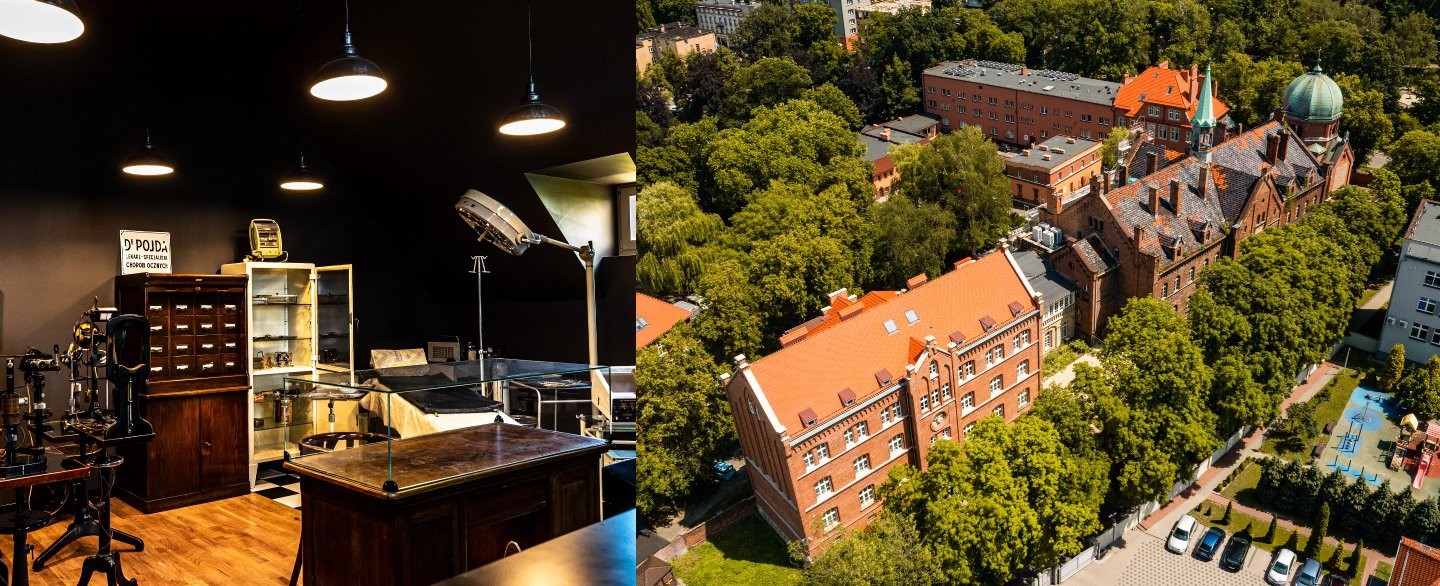

The wide range of exhibition forms used allows for a variety of visitor experiences tailored to the abilities of the audience, from playful for the youngest through interactive to traditional boards and displays. While wandering through the former hospital rooms, visitors learn about the various hospital wards and medical specialities (e.g. Emergency Room, ophthalmology, orthopaedics, surgery, urology, dermatology). Individual stations, which are often interactive, present elements of human anatomy (e.g. the structure of the eye - in ophthalmology), medical tools and technologies used in a particular speciality.
A separate part of the exhibition presents selected elements from the history of medicine - from historical texts, through engravings and dioramas, to the arrangement of a medical office from the mid-20th century.
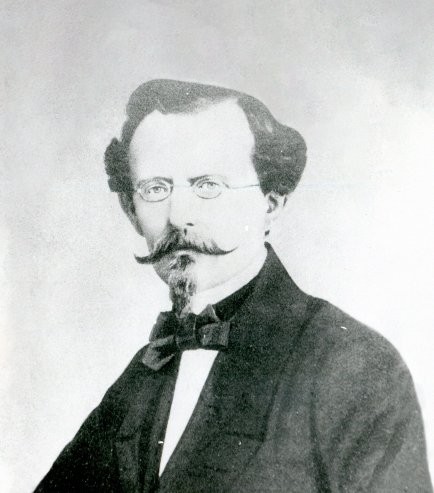
Opening of the hospital under the name Juliuskenhaus (‘Juliusz’ Hospital)
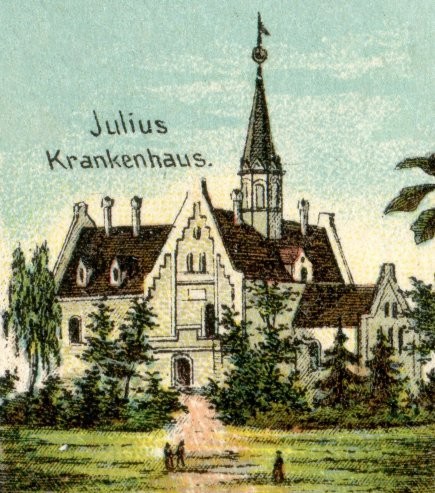
Reconstruction of the ‘Juliusz’ pavilion and construction of the hospital chapel
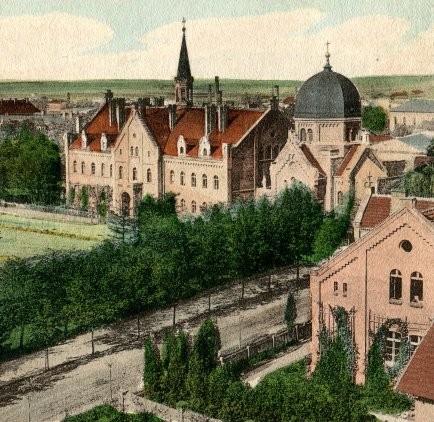
The purchase of the hospital from the Association of the Knights of Malta by the district authorities of Rybnik
Transformation of the facility into a City Hospital
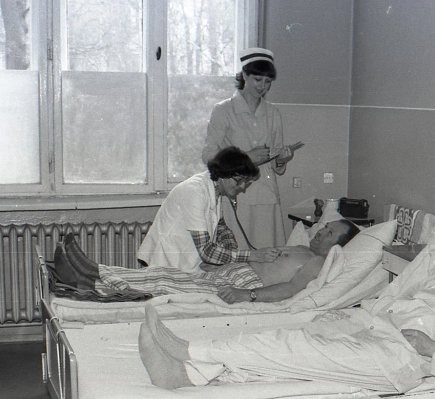
Transfer of the hospital into the structure of the Voivodeship Specialist Hospital No. 3 in Rybnik-Orzepowice
Takeover of the ‘Rafał’ pavilion by the Fr. E. Drobny in Rybnik and the launch of the Juliusz Education Centre
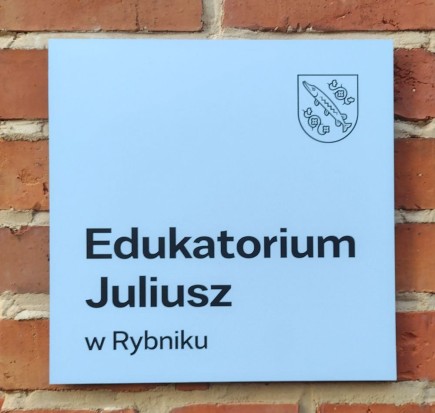
Adoption of the Juliuskrankenhaus Statutes
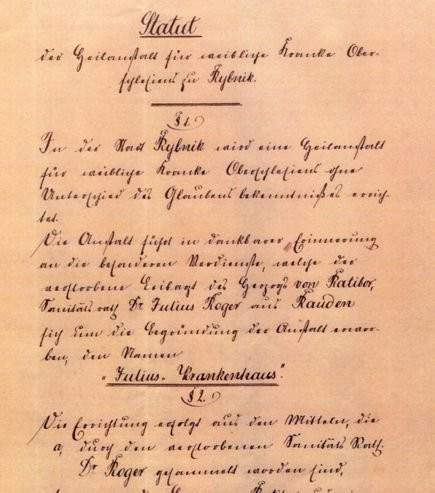
Takeover of the hospital by the Association of Silesian Knights of Malta and opening of the company pharmacy
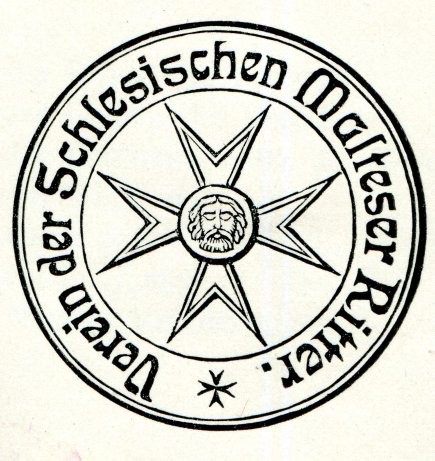
Construction of the ‘ Rafał’ pavilion
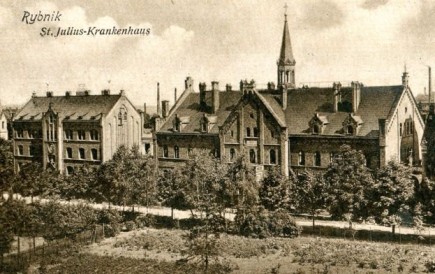
Dedication of a District Ambulance Station
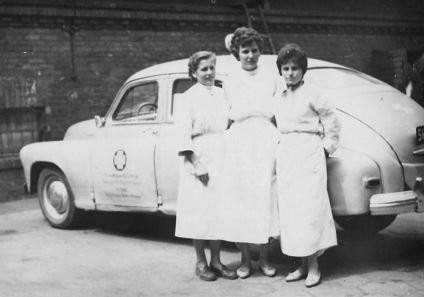
Change of name to City Hospital No. 1
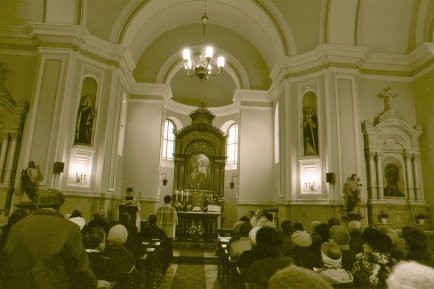
Closure of the hospital and transfer of its activities to the Voivodeship Hospital in Orzepowice

Adoption of the Juliuskrankenhaus Statutes

Opening of the hospital under the name Juliuskenhaus (‘Juliusz’ Hospital)

Takeover of the hospital by the Association of Silesian Knights of Malta and opening of the company pharmacy

Reconstruction of the ‘Juliusz’ pavilion and construction of the hospital chapel

Construction of the ‘ Rafał’ pavilion

The purchase of the hospital from the Association of the Knights of Malta by the district authorities of Rybnik
Dedication of a District Ambulance Station

Transformation of the facility into a City Hospital

Change of name to City Hospital No. 1

Transfer of the hospital into the structure of the Voivodeship Specialist Hospital No. 3 in Rybnik-Orzepowice
Closure of the hospital and transfer of its activities to the Voivodeship Hospital in Orzepowice
Takeover of the ‘Rafał’ pavilion by the Fr. E. Drobny in Rybnik and the launch of the Juliusz Education Centre

Julius Roger, born on 28 February 1819 in Niederstotzingen in the Swabian Jura area (on the border between Baden-Württemberg and Bavaria), grew up in an atmosphere of cultural diversity. Julius planned to devote himself to service as a clergyman in order to heal the sphere of the human spirit as a Benedictine, but for health reasons he eventually devoted himself to the physical sphere of human life.

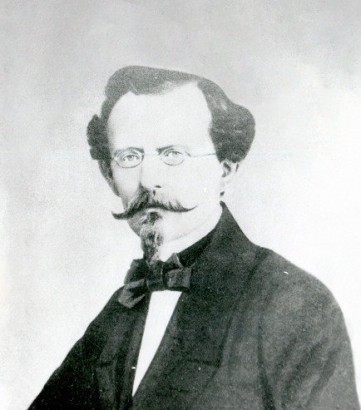
He completed his medical studies in Tübingen, graduating with a doctorate in medicine. He gained his professional training as an assistant in a hospital in Augsburg. In Vienna, he also completed specialised studies in ophthalmology. He then became an assistant at the university clinic in Tübingen.
He briefly settled in the Franconian town of Mergentheim. Already then he was engaged in entomological research.
In 1847, at the age of 28, the enthusiastic young doctor set off for his new post in remote Upper Silesia. He arrived at the ducal palace (former Cistercian abbey) in Rudy, at the court of Victor I Maurice von Hohenlohe-Schillingsfürst, 1st Duke of Racibórz. Doctor Julius Roger and Prince Victor were practically contemporaries, which fostered a mutual relationship and allowed Roger to develop his passions. He arrived at the critical moment of a typhus epidemic and famine among the poor population. This unleashed many new creative forces in him. He became a princely sanitary councillor. He was responsible for the health care of the rural population in the district of Rybnik and adjacent areas, and led the establishment of a small hospital in Rudy.
He did much for the hospital in Pilchowice and the orphanage in Lyski. His medical professional passion was combined with his interest in the world of Upper Silesian nature and folk customs. He focused on developing a passion for collecting and scientifically describing various species of beetles and other insects. He published his achievements in scientific periodicals, e.g. in Berlin, which made him a well-known researcher. Folk song, which he encountered in his rural medical peregrinations, became the main motivation for further ethnographic research.
He learned the Polish language and worked with Polish language animators from the Duchy of Cieszyn. His ethnographic research culminated in a Polish-language edition of a collection of 546 folk songs entitled: Pieśni ludu polskiego w Górnym Szląsku z muzyką. Zebrał i wydał Juliusz Roger, [Songs Of The Polish People In Upper Silesia With Music. Collected And Published By Julius Roger]. The book was published in 1889 in Wrocław. At the age of 45, he was already planning to set up a hospital for women in Rybnik to fulfil a former unrealised foundation. He worked tirelessly, which affected his health.
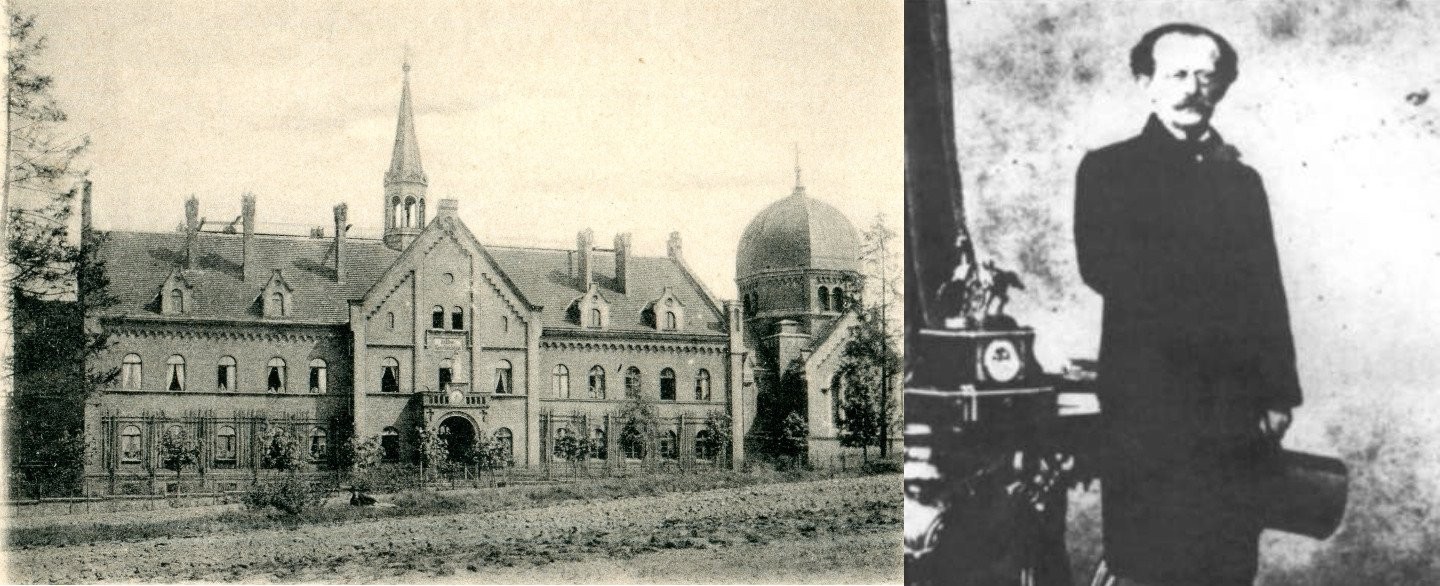

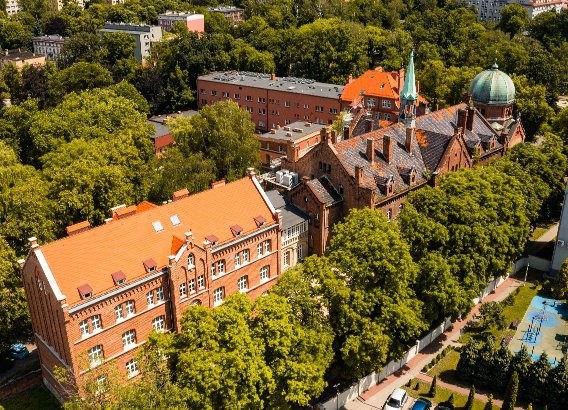
Less than two months before his 46th birthday, on 7 January 1865, during a princely hunt in the forests of Ruda, Julius Roger suffered a massive heart stroke, which led to his quick death. Four days later (11 January 1865) he was laid to rest in the cemetery at the church of St Mary Magdalene in Rudy. To this day a commemorative obelisk with a stone cross still stands over his grave.
The planned hospital in Rybnik began to be built after his death and was completed in the spring of 1869. In Dr Roger's honour, the hospital was to be named the 'Julius Hospital'. His insect collection ended up in a Berlin museum, where it survived until 1945. The doctor's memory did not fade, streets were named after him, he became the patron of a choir and a school.